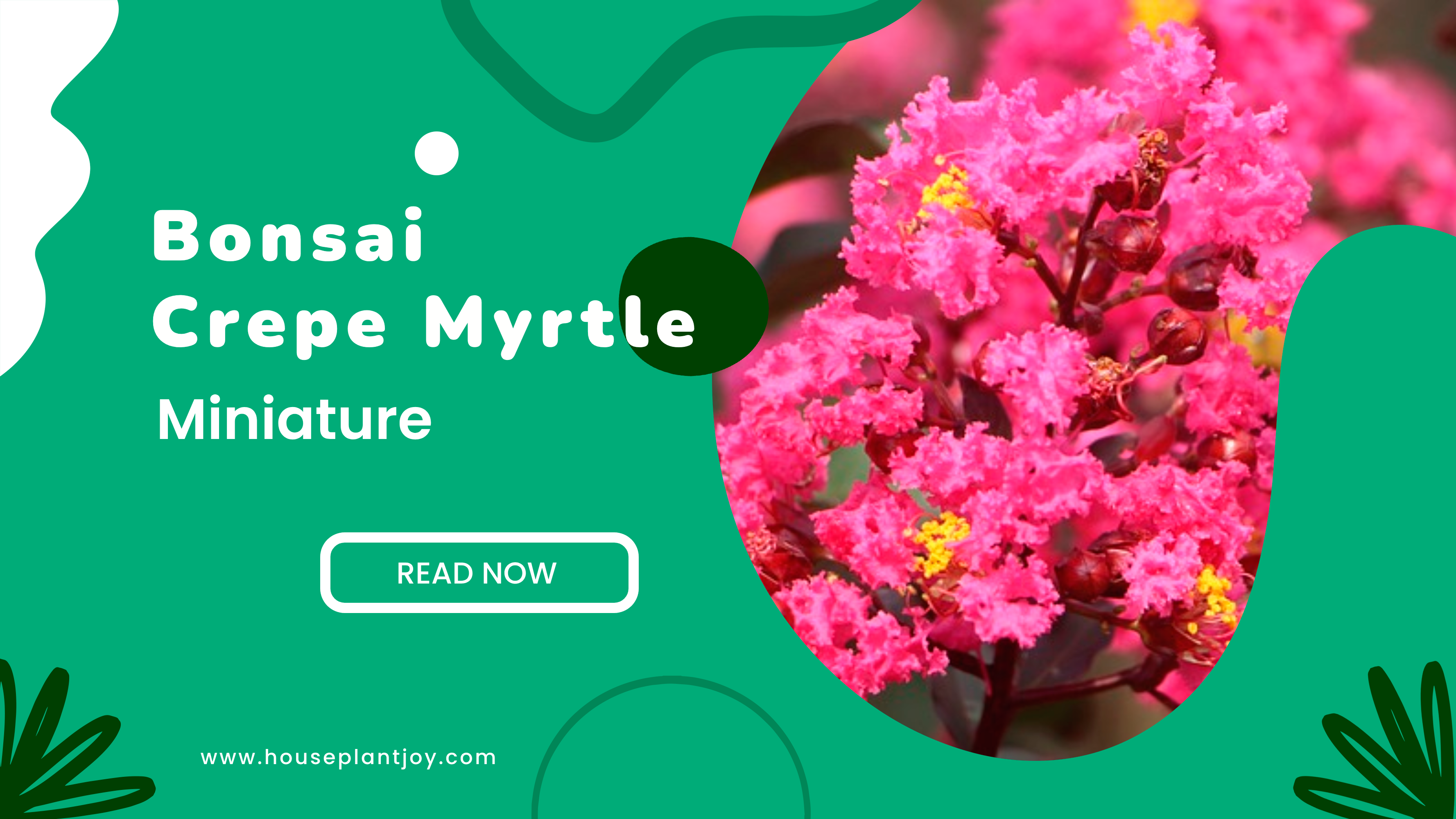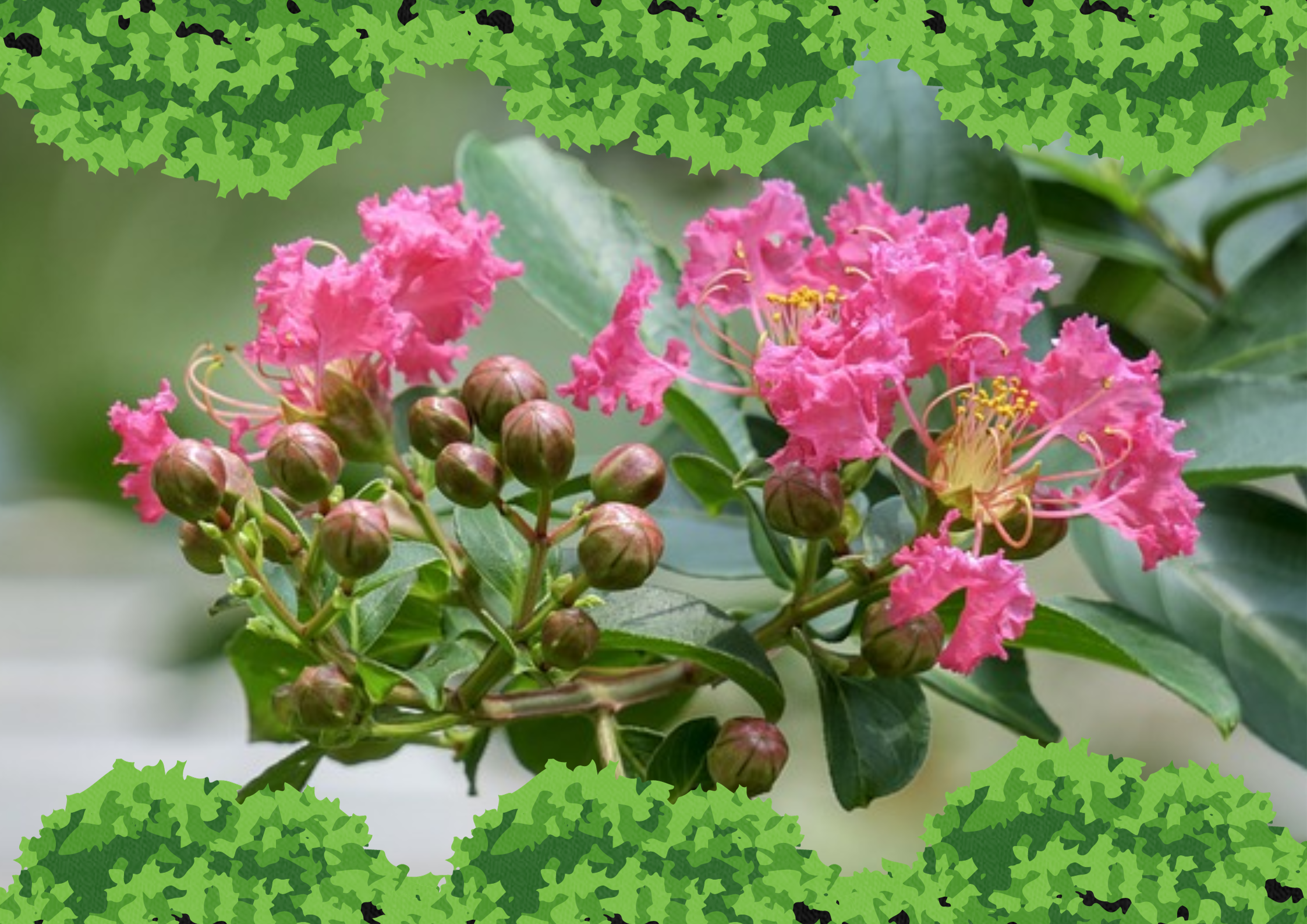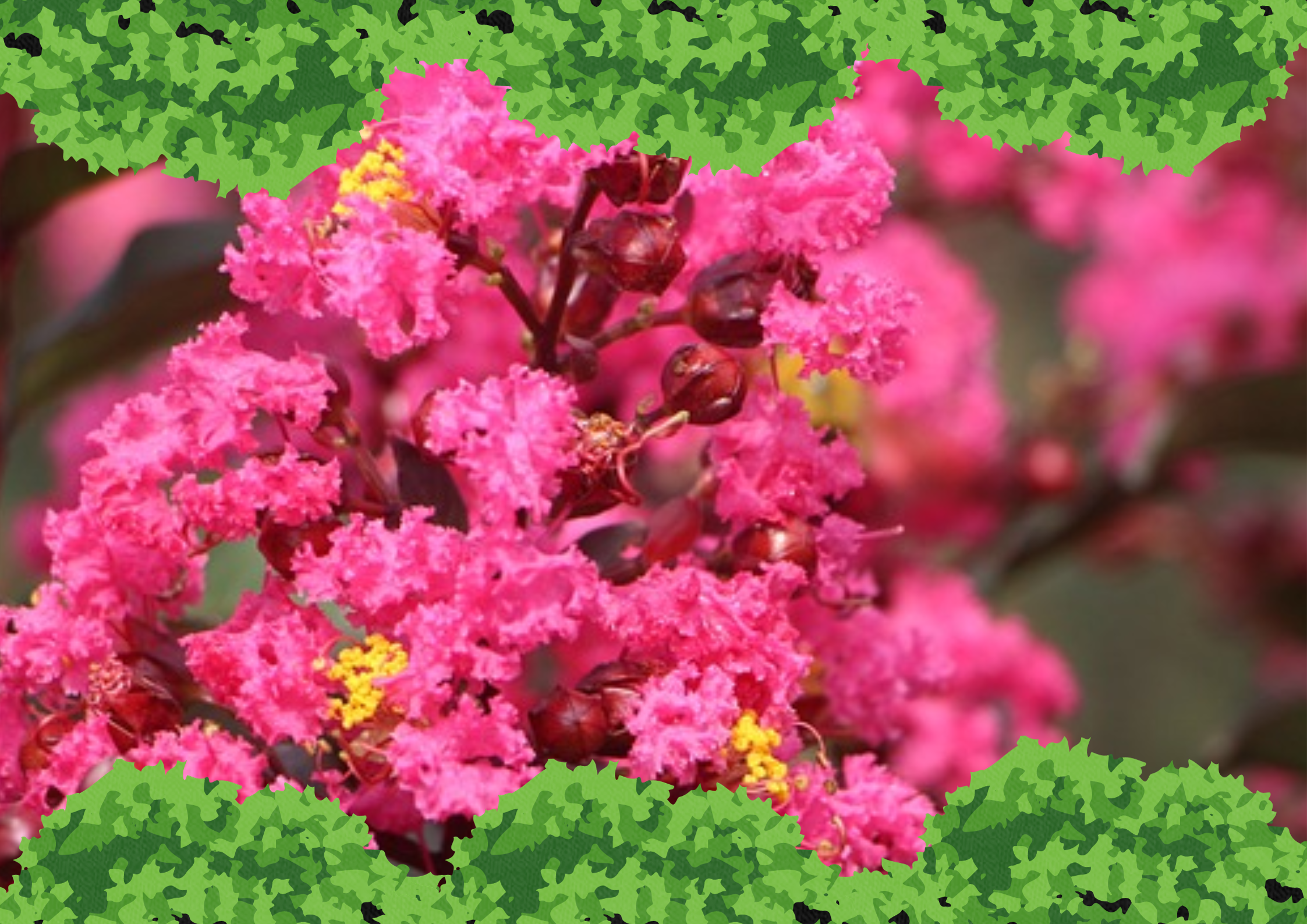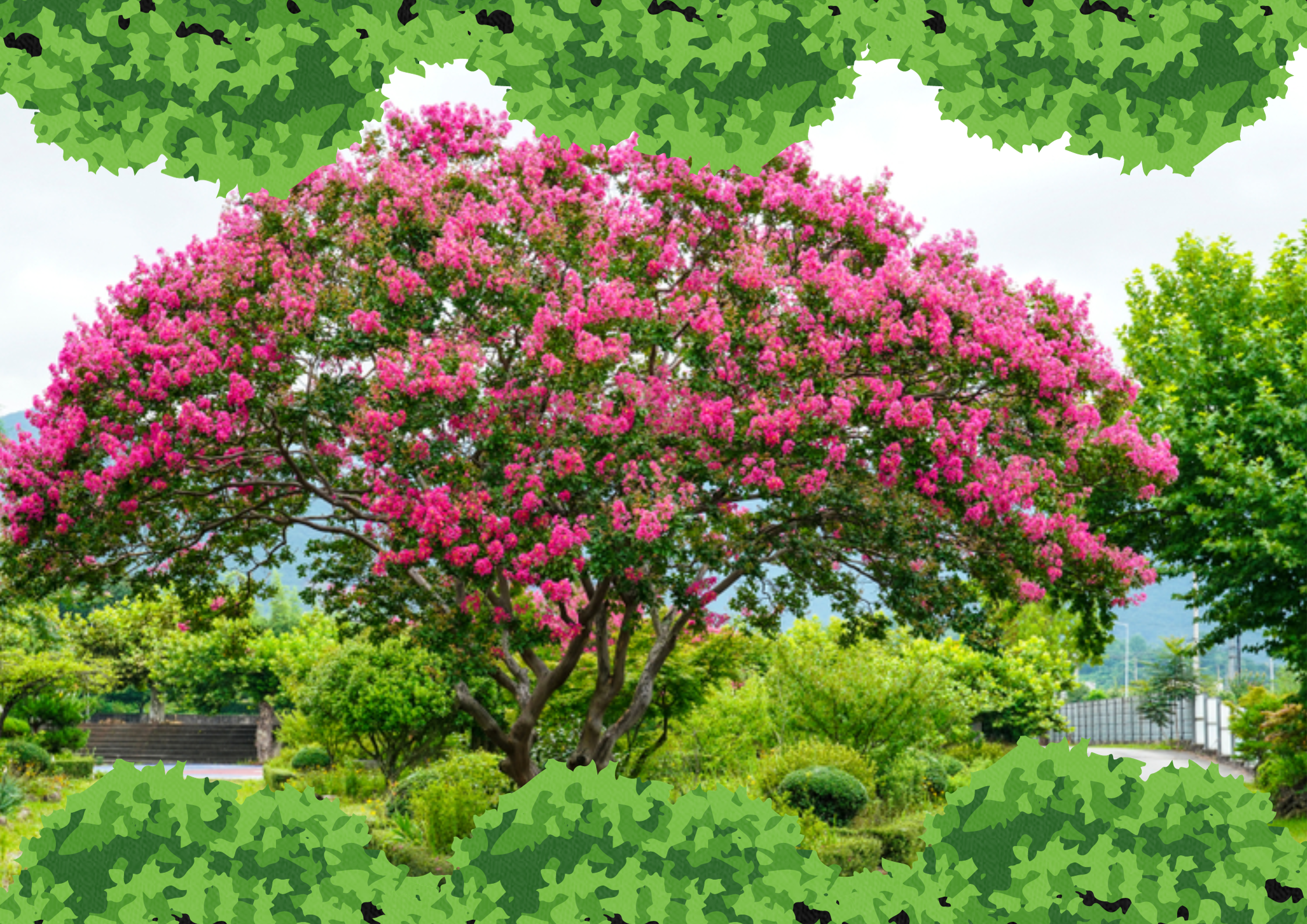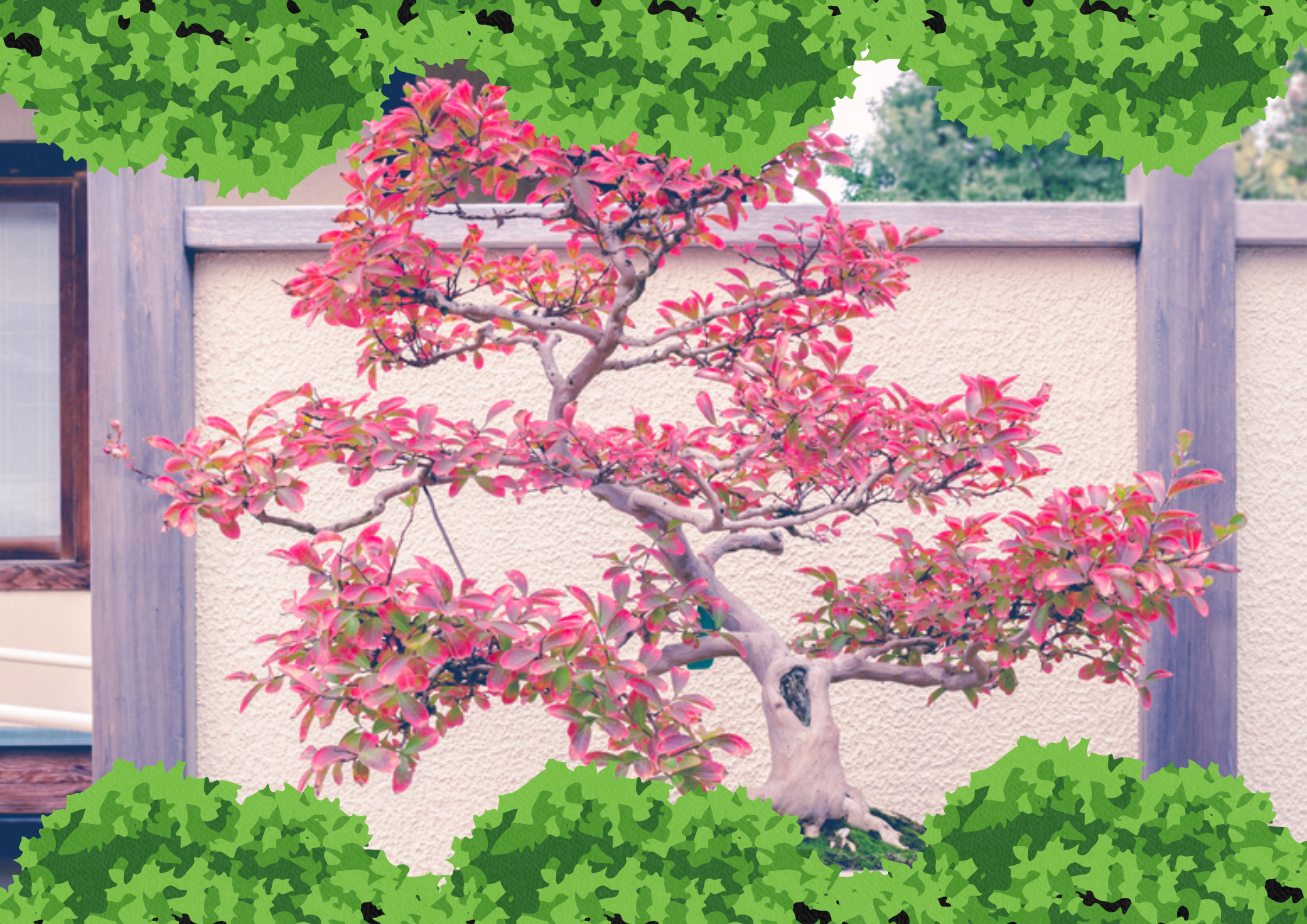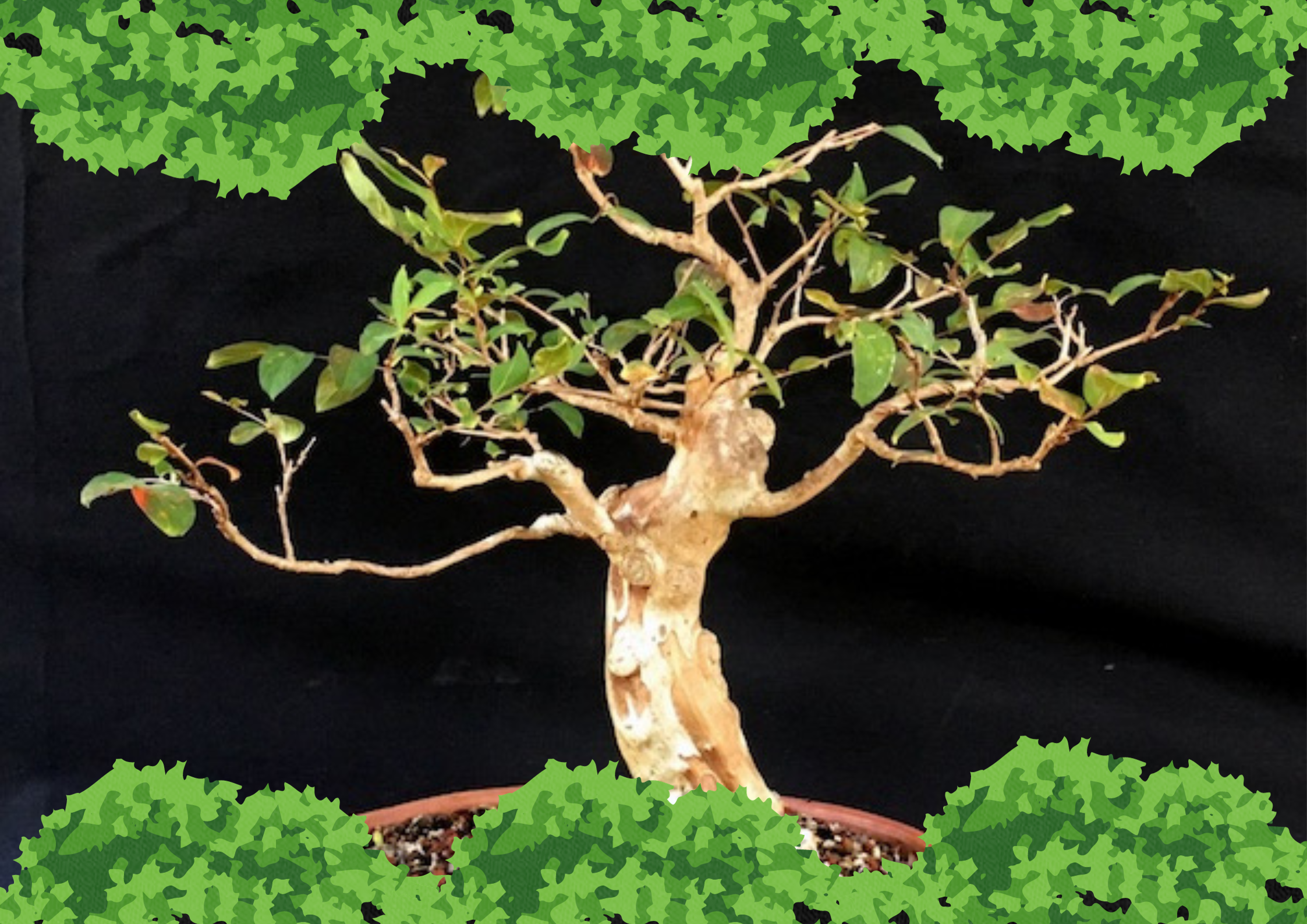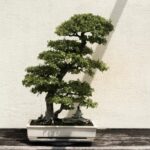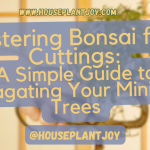HousePlantJoy is supported by our audience. When you purchase through one of our links, we may earn a small affiliate commission. As an Amazon Associate I earn from qualifying purchases. Your cost is not affected.
==================
Bonsai Crepe Myrtles
An Exceptional Choice for Bonsai Enthusiasts
Lagerstroemia indica, commonly referred to as the crape myrtle, is an enchanting tree species native to Asia that has found its way into the hearts of many gardening and bonsai enthusiasts worldwide. Renowned for its stunning seasonal blooms, distinctive exfoliating bark, and vibrant fall foliage, the crape myrtle makes an exemplary subject for the art of bonsai.
However, today, we focus on the miniature crape myrtles, a result of over two decades of careful hybridization and breeding. Just like the full-sized breeds, these charming miniatures are an excellent choice for bonsai, offering a unique blend of aesthetic appeal and easy maintenance.
Why Choose Miniature Crape Myrtles for Bonsai?
Miniature crape myrtles boast a naturally small size, an innate characteristic that sets them apart in the bonsai world. Unlike traditional bonsai species that are pruned several times a year to artificially maintain their small size, these miniatures require significantly less trimming and pruning.
The result? A head start on crafting a beautiful bonsai specimen that is bound to draw admiration from all who lay eyes on it.
In addition to their size, these miniatures are cherished for their striking bark and long summer blooming season. This unique blend of features makes them perfect for creating unusual and stunning bonsai that stand out from the crowd.
As David Chopin, the founder of the Crape Myrtle Company, amusingly recounts, a Japanese Master Bonsai Artist once referred to his miniature crape myrtles as “Instant Bonsai,” a phrase that has stuck around since.
“A few years ago I was invited to attend a Bonsai lecture/demonstration conducted by a Japanese Master Bonsai Artist. We were invited to bring to the class our own unfinished Bonsai plants. I brought along a few of the Mini Crapes in bloom that I was Bonsaing. The Master took one look at the Mini Crapes and exclaimed “Ooohhh…..Instant Bonsai” and I have used that phrase ever since.”
– David Chopin
Understanding the Crepe Myrtle
Before diving into the specifics of crafting a bonsai masterpiece, it’s crucial to understand the crape myrtle in its entirety.
The Diversity of Crepe Myrtle
Crape myrtles are an incredibly diverse species, with over 75 cultivars boasting a wide range of flower colors, including multiple shades of pink, red, white, purple, lavender, coral, and peach. They may even produce bi-color or ‘picotee type’ flowers, where the blooms feature two distinct colors.
The crape myrtle’s size can also vary significantly, with categories based on their mature growth height. These span from ground cover (under 12 inches), miniature (1-5 feet), dwarf (6-10 feet), medium (14-18 feet), to standard (20-30 feet).
Species of Crepe Myrtle
Several species of crape myrtle exist, each with its unique characteristics:
Lagerstroemia indica: The most popular variety native to China, which tolerates heat, humidity, and drought. It thrives in well-drained, moist soils and spans from zone 7 to zone 9.
L. speciosa: Also known as Queen’s Crepe Myrtle, this tropical species ranges from zone 9 to zone 12. It grows to 25-30 feet tall, with large leaves and striking purple flowers.
L. fauriei: A Japanese species featuring white flowers and a resistance to mildew, thereby aiding in the development of mildew-resistant strains among some indica cultivars.
Credits: The Green Alchemist
Caring for Your Bonsai Crepe Myrtle
Though the crape myrtle bonsai can be a delight to behold, it requires attentive care to thrive and bloom. Here are some key care guidelines to follow:
Placement and Light Requirements
Crape myrtle bonsai trees adore the sun and need to be placed in an area with full sun exposure. If you reside in a region where winter temperatures dip below 20 degrees, consider sheltering your tree during the winter in a shed or an unheated garage.
Watering Guidelines
During the growing season, your crape myrtle bonsai will need plenty of water due to its rapid growth. However, remember to slow down watering throughout fall and winter when the tree is dormant.
Fertilizing Needs
A well-balanced fertilizer should be applied every other week during the growing season to encourage new growth and replace nutrients. In winter, this can be reduced to once a month. Alternating between a balanced fertilizer and a low-nitrogen tomato fertilizer can help produce more buds during the year.
Pruning and Training
Pruning is crucial in bonsai cultivation, and the crape myrtle is no exception. However, remember that the flowers grow at the end of each shoot. Therefore, pruning before fall can result in undesirable effects, as the trimmed area will not grow flowers until the next season.
On the other hand, severely trimming the tree back in fall and then allowing it to grow freely the next year encourages rapid thickening of the trunk. The next year, constant pinching of the tree promotes branch ramification. If pruning is discontinued shortly before the flowering period, the tree may still bloom.
Repotting Needs
Repot your crape myrtle bonsai in early spring, before the flowers bloom. This will give it time to recover before it expands all its energy on the flowers. Keep an eye on the roots and repot when the tree becomes root-bound.
Dealing with Pests and Diseases
Like any other plant, crape myrtles may occasionally suffer from pests and diseases. The most common culprits are aphids and powdery mildew. Fortunately, these issues are easily managed with the right insecticides or fungicides, as well as proper care and maintenance.
Crafting Your Bonsai Crepe Myrtle:
A Step-by-Step Guide
Armed with the knowledge of the crape myrtle’s needs and characteristics, it’s time to delve into the process of crafting your crape myrtle bonsai.
Selecting Your Tree
The first step in crafting your crape myrtle bonsai is selecting the right tree. Dwarf and miniature varieties are recommended due to their slow growth compared to other types. However, regardless of the size, you should ensure the tree is healthy, with a robust root system and no visible signs of pests or diseases.
Designing Your Bonsai
Next, you’ll need to envision the design of your bonsai. This involves determining the style you want to create, whether it’s a traditional informal upright bonsai design or a broom style. This decision will guide your pruning and training efforts.
Pruning and Training
Once you’ve decided on your design, it’s time to start pruning. Discard any unnecessary elements and begin shaping your tree. Remember, the crape myrtle flowers at the ends of its shoots, so prune carefully if you want it to flower.
You can use wires for training, but be careful not to damage the tree’s beautiful bark. Wrap paper or tape around the wire before winding it around the branches, and always remove the wire in time.
Ongoing Care
Your crape myrtle bonsai will need ongoing care to thrive. This includes regular watering, especially during the growing season, and feeding with a well-balanced fertilizer to promote growth. Regular pruning will also be necessary to maintain your bonsai’s shape and encourage flowering.
Winter Care
In winter, your crape myrtle bonsai should be moved to a cool but frost-free place. This will ensure it enters dormancy, allowing it to drop its leaves and prepare for the next growing season.
The Beauty of Miniature Bonsai Crepe Myrtle
The crape myrtle bonsai is undoubtedly a beauty to behold. Its stunning seasonal blooms, vibrant fall foliage, and distinctive exfoliating bark make it a favorite among bonsai enthusiasts. And with the right care and attention, you too can enjoy the beauty of a crape myrtle bonsai in your own home or garden.
Whether you’re a seasoned bonsai cultivator or just starting on your bonsai journey, the crape myrtle offers an excellent opportunity to create a unique and captivating bonsai that will surely be the envy of all who see it.
“Bonsai is not the result: that comes after. Your enjoyment is what is important.” – John Naka, Bonsai Master.
FAQs
What Is a Crepe Myrtle Bonsai?
A Crepe Myrtle bonsai is a miniature version of the Crepe Myrtle tree that has been cultivated and trained to grow in a small, aesthetically pleasing form.
How Do I Care for My Crepe Myrtle Bonsai?
Provide well-draining soil, ample sunlight, and regular watering. Prune the branches to maintain the desired shape, and repot the bonsai every few years to refresh the soil.
When Should I Prune My Bonsai Crepe Myrtle?
Pruning can be done during the late winter or early spring before new growth begins. Avoid heavy pruning during the growing season to prevent stress on the tree.
Can I Keep My Bonsai Crepe Myrtle Indoors?
While bonsai Crepe Myrtle can be brought indoors temporarily for display, they generally prefer outdoor conditions. They need a period of dormancy during the winter, and indoor conditions may not provide the necessary sunlight and temperature variations.
Follow Our Other Socials
Facebook: Discover a lush oasis of greenery on HousePlantJoy’s Facebook page!
Twitter: Unearth the joy of growing green with HousePlantJoy on Twitter! Follow us for real-time updates, quick tips, and bite-sized snippets of plant wisdom.
Pinterest: Embark on a visual journey into the world of HousePlantJoy on Pinterest, where every pin is a leafy masterpiece waiting to inspire your next plant project.
Instagram: Immerse yourself in the lush and vibrant world of HousePlantJoy on Instagram!

